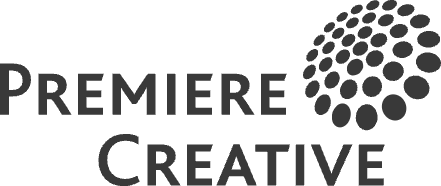Securing top Google rankings is not just a goal—it’s a critical component for achieving online success. Whether you’re a seasoned SEO expert or just embarking on your journey into search engine optimization, recognizing and addressing the factors hindering your page’s ranking potential is crucial.
In this blog, we’ll address 10 pervasive issues that may undermine your Google rankings and offer actionable solutions to help you overcome these obstacles. From technical SEO glitches to content quality pitfalls, get ready to transform your website’s performance and climb the search engine ladder with our detailed guide.
Why You Want Your Pages Ranked on Google
Getting your web pages ranked on Google is crucial for several reasons. Firstly, Google is the world’s most popular search engine, commanding over 92% of the global search engine market share. This means a high ranking on Google can significantly increase your website’s visibility, driving a large volume of organic traffic.
Secondly, users typically trust Google’s search results, often perceiving higher-ranked pages as more credible and authoritative. This trust can translate into higher click-through rates and, ultimately, more conversions. Additionally, being well-ranked on Google can enhance your brand’s credibility and reputation, setting you apart from competitors.
Google uses a sophisticated algorithm to rank web pages, considering hundreds of factors to determine the most relevant and high-quality results for a given search query. This process starts with crawling, where Googlebot scans the web to discover new and updated pages. Next is indexing, where the content of those pages is analyzed and stored in Google’s database. Finally, during the ranking phase, Google evaluates pages based on criteria such as keyword relevance, site quality, user experience, mobile-friendliness, and backlinks. By understanding and optimizing for these factors, you can improve your chances of ranking higher and reaping the benefits of increased organic traffic and enhanced online presence.
1. Accessibility Issues
Technical obstacles can prevent Google from crawling and indexing your page effectively. Ensuring that your site is accessible to search engine crawlers is crucial for achieving high rankings. By addressing these accessibility issues, you can improve Google’s ability to crawl and index your pages, thereby enhancing your chances of achieving higher rankings and better visibility in search results. Key areas to check include:
Crawling Restrictions
- Robots.txt File: Ensure your robots.txt file isn’t inadvertently blocking critical pages. This file instructs search engine crawlers which pages they can or cannot access on your site. A misconfigured robots.txt file can prevent important pages from being crawled and indexed. Regularly review this file to ensure it aligns with your site’s SEO strategy.
- Crawl Budget: Google allocates a certain amount of crawl activity to each site. Optimize your site’s crawl budget by eliminating duplicate content, improving your site’s speed, and ensuring that essential pages are easily accessible.
Indexing Challenges
- Google Search Console: Use Google Search Console to verify if your page is properly indexed. This tool provides insights into how Google views your site and highlights any issues preventing proper indexing. Check the Coverage report for any errors or excluded pages and address the issues promptly.
- Meta Tags: Ensure that your pages have appropriate meta tags, including the “NoIndex” tag, which can prevent pages from being indexed if used incorrectly. Properly set up meta descriptions and titles to improve your site’s search appearance.
- Sitemap Submission: Submit an up-to-date XML sitemap to Google Search Console. This helps Google understand the structure of your site and ensures that all important pages are indexed. Regularly update your sitemap to reflect any changes or additions to your site.
- Content Accessibility: Ensure that important content is not hidden behind JavaScript or other technologies that crawlers might have difficulty accessing. Use server-side rendering or other methods to make sure that all essential content is visible to search engines.
2. User Experience Issues
Poor user experience, such as complex navigation or intrusive pop-ups, can increase bounce rates and signal to Google that your page isn’t user-friendly. Optimize your website for a smooth, intuitive user experience by simplifying navigation, reducing page load times, and minimizing disruptive elements. A positive user experience not only improves SEO but also enhances overall site usability and visitor satisfaction.
3. Poor Page Speed
Google prioritizes user experience, making page speed a significant ranking factor. When your website loads slowly, it can frustrate visitors and lead to higher bounce rates. Bounce rates are the percentage of visitors who navigate away from a website after only viewing one page. Improving your page’s loading time not only enhances user satisfaction but also potentially boosts rankings, as faster-loading pages tend to perform better in search engine results.
According to statistics from sematext, good loading times are considered under 2 seconds for optimal user experience and under 3 seconds to minimize bounce rates. Pages that load within these benchmarks are more likely to retain visitors and positively impact SEO performance.
4. Lack of Quality Backlinks
Backlinks from reputable sites signal to Google that your content is credible and relevant. If your page lacks backlinks, it may struggle to rank well in search results. Focus on building high-quality links from authoritative sources within your industry. This can be achieved through content partnerships, guest blogging, or networking with influencers. However, you must ensure your backlinks are of quality, not quantity. If you have backlinks that are spammed with information that does not correlate to your content, it will bring down your rankings. Quality backlinks not only improve your SEO authority but also drive referral traffic to your site.
5. Keyword Optimization
Effective keyword usage is fundamental to SEO success. Your content should incorporate relevant keywords naturally without overusing them, as keyword stuffing can also harm your rankings. Tools like Google Keyword Planner can help identify optimal keywords for your niche based on search volume and competition.
By strategically placing these keywords in your content, meta tags, headers, etc. then you can improve your chances of ranking higher in search engine results pages (SERPs).
6. Content Quality and Relevance
Google values content that aligns with the user’s intent. To improve your rankings, ensure your content is informative, honest, engaging, and directly addresses the search queries of your target audience.
Additionally, optimizing your content with relevant keywords and providing solutions that resonate with your audience’s interests can further strengthen your visibility and user engagement. High-quality content not only attracts visitors but also encourages them to spend more time on your site, reducing bounce rates and signaling to Google that your page satisfies user needs effectively.
7. Duplicate Content
Google penalizes pages with duplicated content, as it diminishes user experience and can lead to confusion in search results. Ensure your content is unique, engaging, and adds value to users by providing original insights, perspectives, and data. Conduct regular checks to eliminate duplicate content across your site, using tools like Google Search Console, to avoid SEO penalties and improve your site’s credibility.
8. Mobile Optimization
With the increase in mobile searches, Google prioritizes mobile-friendly pages in its rankings. Ensure your website is responsive and provides a seamless experience across all devices, including smartphones and tablets. Mobile optimization not only improves user experience but also enhances your SEO performance.
9. Competitive Analysis
Analyzing competitor strategies can provide valuable insights into why your page isn’t ranking well. Identify what competitors are doing effectively, such as content types, keywords, or promotion tactics, and adapt your approach accordingly. By understanding your competitive landscape, you can uncover new opportunities to differentiate your content and improve your SEO strategy.
10. Google Algorithm Updates
Google frequently updates its algorithms to refine search results and improve user experience. A sudden drop in rankings may be due to an algorithm update that affects how your site is indexed and ranked. Stay informed about algorithm changes through industry news and Google’s official announcements. Adapt your SEO strategy accordingly by creating high-quality, user-focused content and maintaining the best SEO practices to mitigate the impact of algorithmic shifts.
Elevating Your Page’s Ranking on Google
Achieving top rankings on Google requires a strategic approach that addresses technical, content, and user experience factors. By identifying and resolving these ten issues, you can enhance your page’s visibility and attract more organic traffic. Premiere Creative uses the best SEO practices and digital marketing strategies. To explore how we can help you achieve your SEO goals, contact us at (973) 346-8100.

